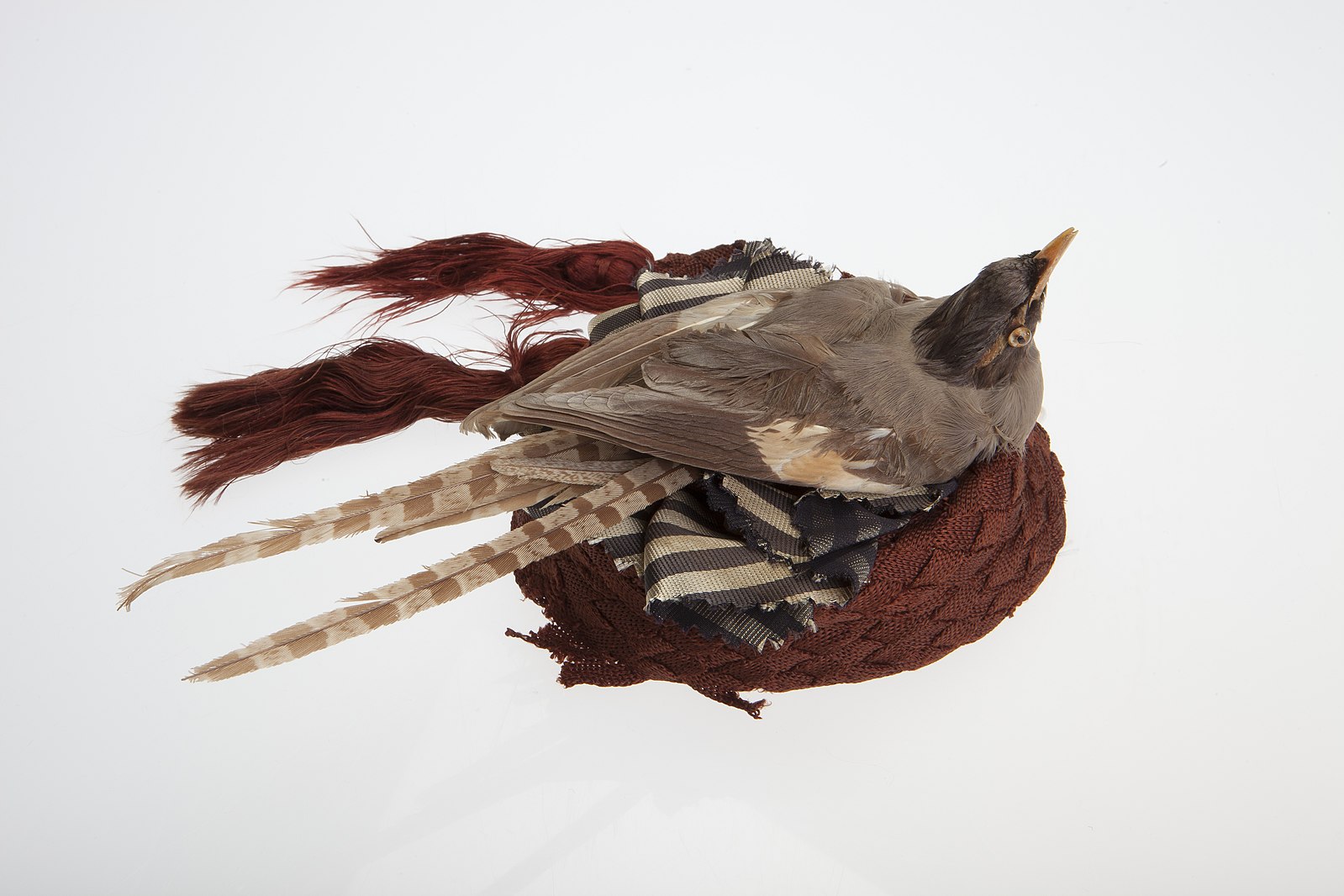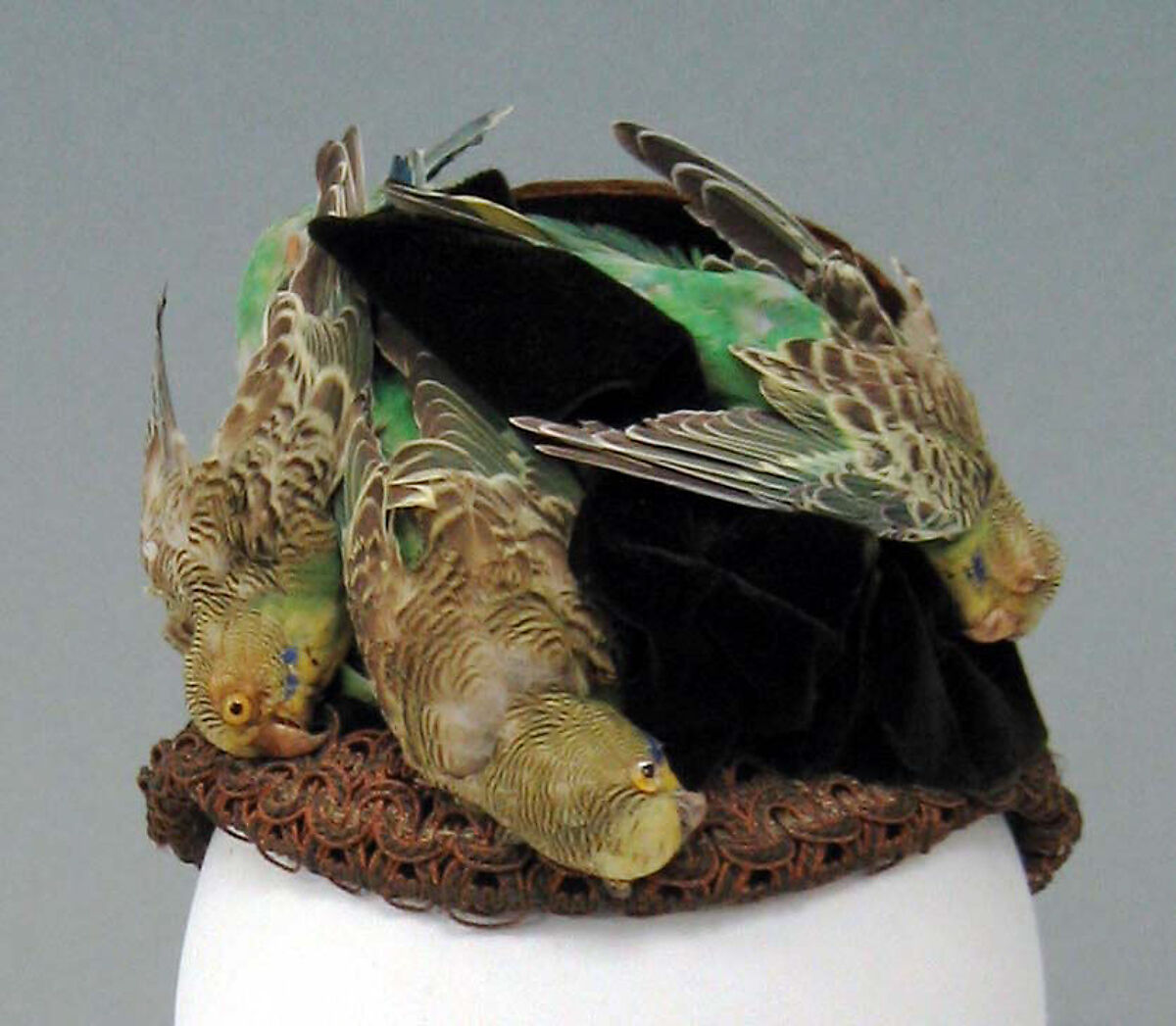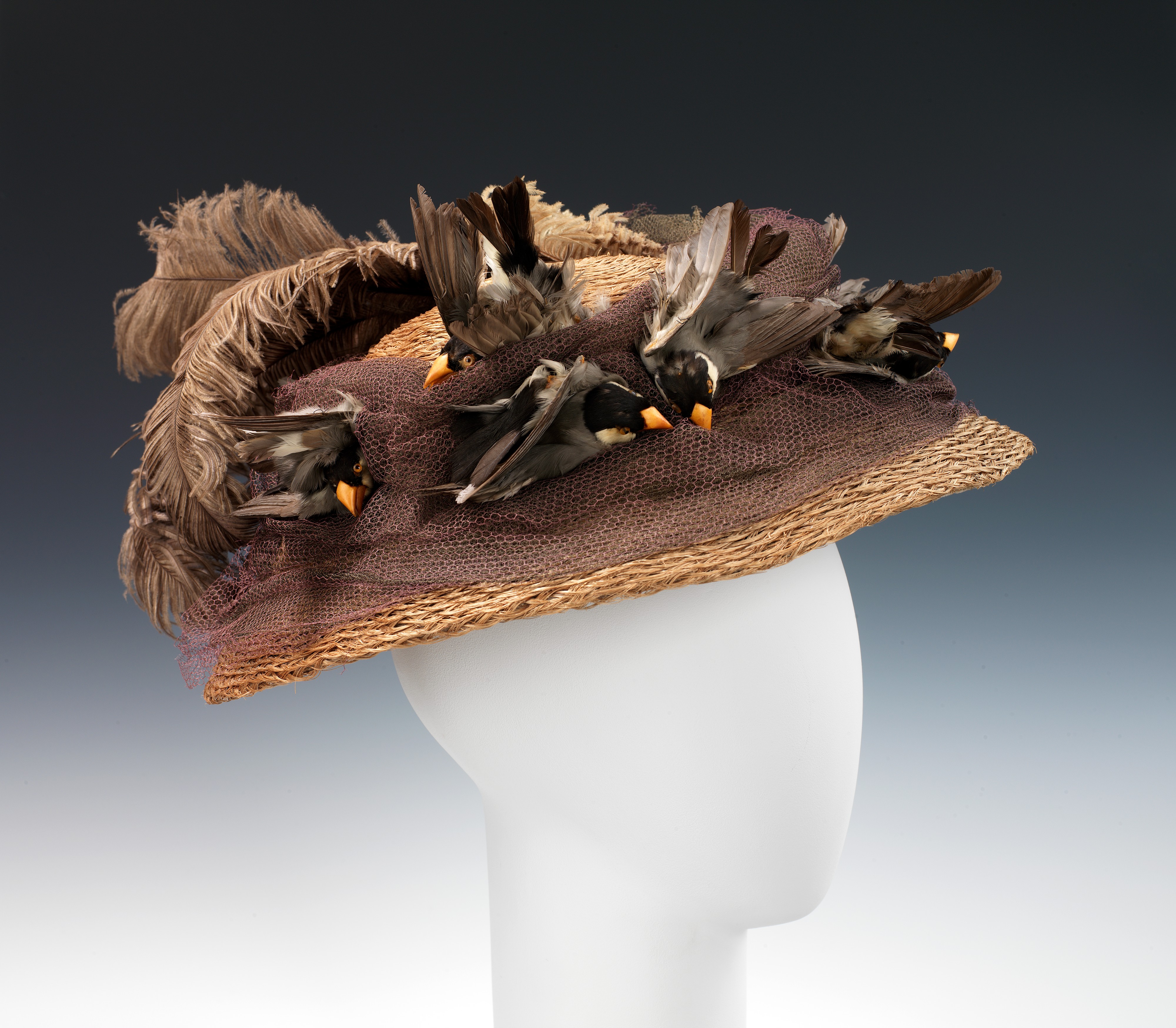an inverted nest
Some historic bird hats were designed in such a way as to position the bird's taxidermied carcass in the stylized representation of a nest.

This example, held by the Missouri Historical Society, is dated between 1870 and 1880. Entitled "Women's Small Hat with Brown Bird," it is described as follows: "Women's small brown braided silk hat with two tassels and a stuffed bird perched on top like a nest."
MHS Open Access Policy: You are welcome to download and utilize any digital file that the Missouri Historical believes is likely in the public domain or is free of other known restrictions. This content is available free of charge and may be used without seeking permission from the Missouri Historical Society.

A more highly stylized example in the collection of the Metropolitan Museum of Art, simply titled "Bonnet " and dated 1890, has been created in the medium of silk and bird feathers.
The accompanying text points out that "In the nineteenth century sentiment and exhibitionism propelled women of fashion to adopt hats and bonnets with elaborate plumage. Regarded as coquettish when placed jauntily on the side of the head, headdresses boasted sprays, wings, and even entire carcasses. Doves, swallows, and birds of paradise were particularly fashionable. In London a woman was observed in a hat with finch heads, while another proudly displayed the plumage of the robin."
The Costume Collection at the Metropolitan Museum of Art. Gift of Susan Dwight Bliss, 1937. Accession Number: 37.144.2. Public Domain. Open Access.

This example, also held by the Metropolitan Museum of Art, entitled "Hat ca. 1890 ," was designed by "Mlle. Louise" in a deliberate mimicry of birds in their nest. Created in the medium of bast fiber, cotton, birds, and feathers, as the description of the item indicates, "Use of woven bast fiber in this hat evokes a bird's nest. The design illustrates the popularity of using real birds as millinery trim."
Brooklyn Museum Costume Collection at the Metropolitan Museum of Art. Gift of the Brooklyn Museum, 2009. Gift of Pratt Institute, 1943. Accession Number: 2009.300.1777. Public Domain. Open Access.
